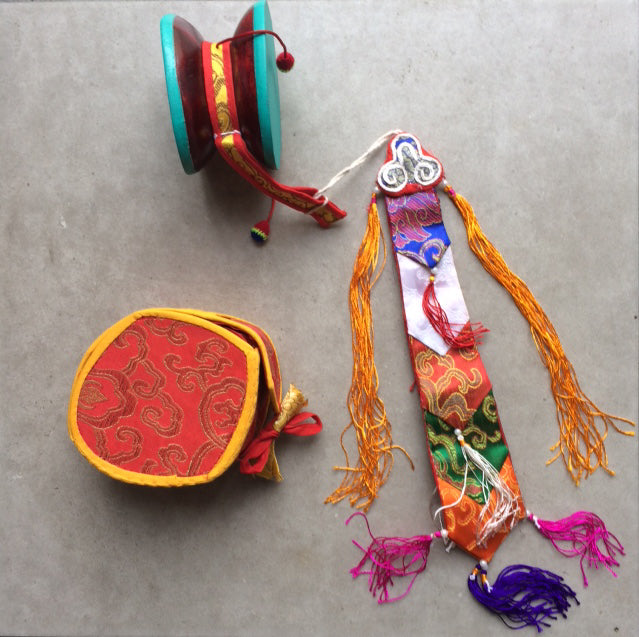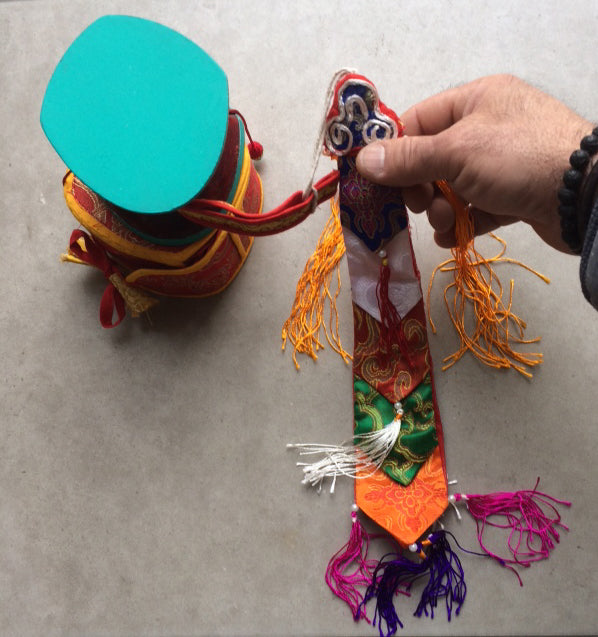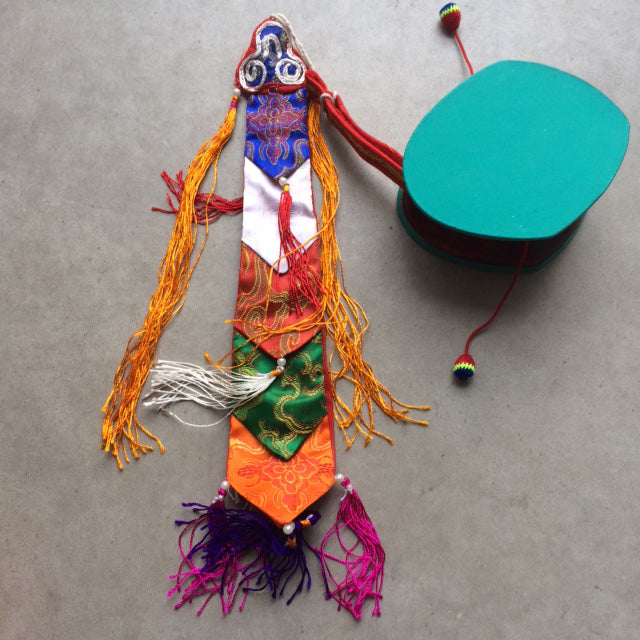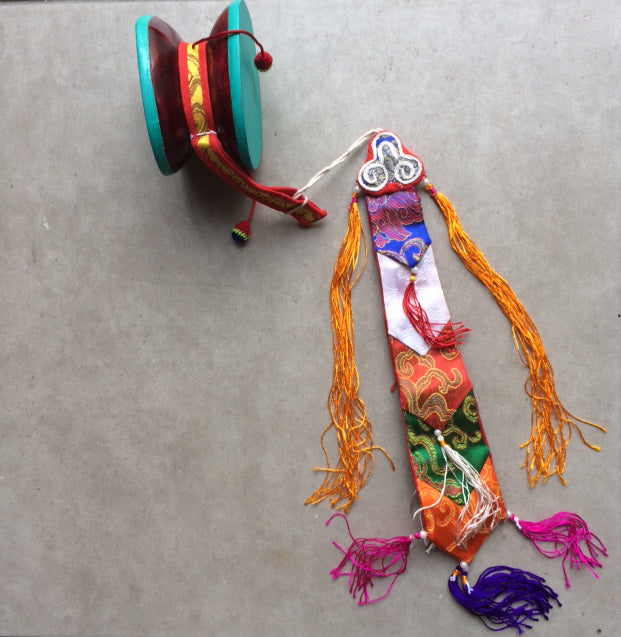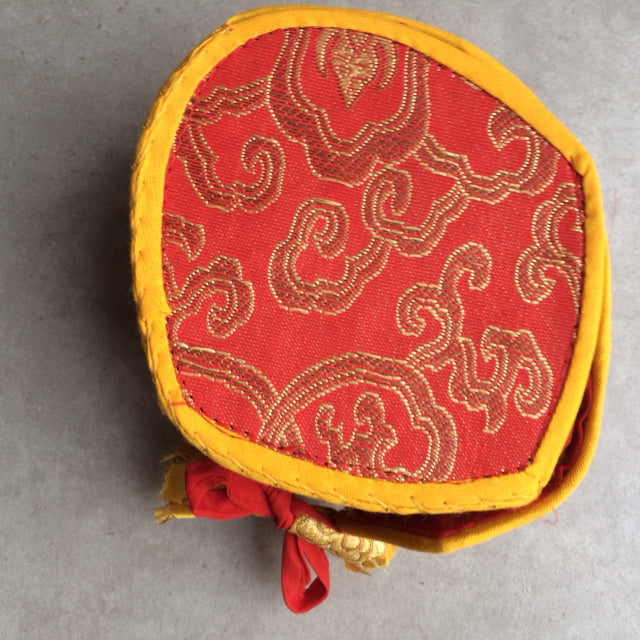Tibetan Damaru or 'beggar's drum'. Derived from mystical rituals, beautifully decorated with colorful tassels and fringes, with a silk brocade cover!
Tibetan Damaru or 'beggar's drum'. Derived from mystical rituals, beautifully decorated with colorful tassels and fringes, with a silk brocade cover!
Couldn't load pickup availability
- ✧─────✧
About the product:
→ Name/Type: Tibetan Damaru or 'beggar's drum' - A fascinating and mystical ritual drum, beautifully decorated with colorful tassels and fringes, that produces a perfectly balanced sound. Easy to roll up and store in the included silk brocade case.
🌍 Origin: Nepal
📐 Dimensions: 13 x 11 x 7 centimeters
⚖️ Weight: ± 255 grams
🧬 Materials: Wood - Brocade fabric
🎶 Sound type: Warm and medium tone
📦 Packaging: Sold individually
🎁 Ideal as a gift or a treat for yourself!
🛕 History and symbolism
In Buddhist philosophy, sound is considered a symbol of emptiness, shunyata.
The damaru's shape has its roots in ancient India, where one side of the drum is considered to represent the masculine energy of method and the other the feminine energy of wisdom. The two sides of the drum together also represent Bodhicitta, the ultimate and relative state of enlightenment.
In the Buddhist tantric ritual Chod, the drum instructs and reminds us of impermanence while the sound summons the female deities called Dakinis.
Another interpretation of the sound suggests that the drum represents the rhythmic powers of the heartbeat.
In Hinduism, particularly among devotees of Shiva, it is believed that the beating of a ritual drum by Shiva produced the very first sound (nada). This first sound was made in the void of nothingness. Shiva began his dance of creation to the rhythm of the drum. From his dance, the world was born.
📋 Information sheet
| Features | Origin & Symbolism | Uses & Benefits |
|---|
| Small drum with two faces, connected by a rope | Buddhist ritual instrument, originating from Tibet and India | Used in the recitation of mantras and spiritual rituals |
| Central wooden stick, decorated and handcrafted | Symbol of the union between sound and universal vibration | Promotes concentration, meditation, and spiritual elevation |
| String balls producing sound through rapid percussion | Also called “beggar’s drum” in the tradition | It provides a rhythmic and hypnotic sound |
| Handcrafted, unique pieces | Used by monks and yogis for centuries | Suitable for yoga practitioners, meditators, and collectors of sacred objects. |
- ✧─────✧
A question? A comment? | Order and delivery information
A question? A comment? | Order and delivery information
⋯⋯⋯⋯⋯⋯⋯⋯⋯⋯⋯⋯⋯⋯⋯⋯⋯⋯⋯⋯
📞 Customer service available from Tuesday to Saturday , from 10am to 7pm (French time)
- 🇫🇷 From France: 06 51 85 38 18
- 🌍 From abroad: +33 6 51 85 38 18
- 💬 Live chat: via the bubble in the bottom right corner of your screen
- 📧 Email : available 24/7 – we respond quickly!
⋯⋯⋯⋯⋯⋯⋯⋯⋯⋯⋯⋯⋯⋯⋯⋯⋯⋯⋯⋯
🔖 Order today and receive your package within 2 to 10 days depending on your continent.
💳 Secure payment & certified by SSL encryption 🔐
↩️ Returns & exchanges possible within 14 to 30 days after receipt.
🌍 Shipping costs are calculated automatically based on your shipping address at checkout.
📦 Country of shipment: France 🇫🇷
Share
